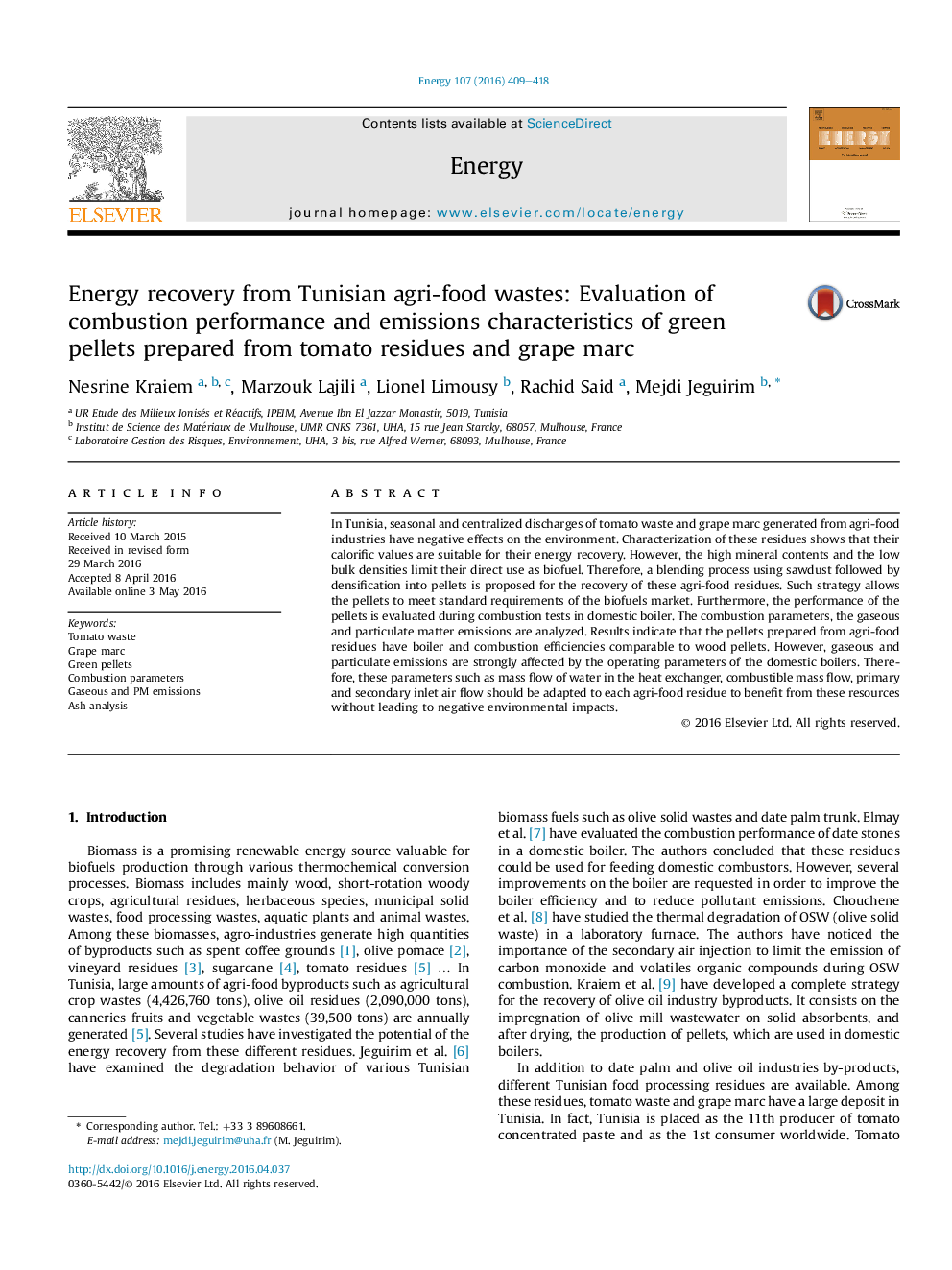| کد مقاله | کد نشریه | سال انتشار | مقاله انگلیسی | نسخه تمام متن |
|---|---|---|---|---|
| 1730848 | 1521441 | 2016 | 10 صفحه PDF | دانلود رایگان |
• Agri-food residues are a valuable source for energy production.
• Green pellets are produced from grape marc and tomato residues.
• Blending the agri-food residues with sawdust reduce the pellets ash content.
• Combustion performances of the produced pellets reach the standard requirements.
• Several boiler adjustments are requested to improve gaseous and particulate emissions.
In Tunisia, seasonal and centralized discharges of tomato waste and grape marc generated from agri-food industries have negative effects on the environment. Characterization of these residues shows that their calorific values are suitable for their energy recovery. However, the high mineral contents and the low bulk densities limit their direct use as biofuel. Therefore, a blending process using sawdust followed by densification into pellets is proposed for the recovery of these agri-food residues. Such strategy allows the pellets to meet standard requirements of the biofuels market. Furthermore, the performance of the pellets is evaluated during combustion tests in domestic boiler. The combustion parameters, the gaseous and particulate matter emissions are analyzed. Results indicate that the pellets prepared from agri-food residues have boiler and combustion efficiencies comparable to wood pellets. However, gaseous and particulate emissions are strongly affected by the operating parameters of the domestic boilers. Therefore, these parameters such as mass flow of water in the heat exchanger, combustible mass flow, primary and secondary inlet air flow should be adapted to each agri-food residue to benefit from these resources without leading to negative environmental impacts.
Journal: Energy - Volume 107, 15 July 2016, Pages 409–418
